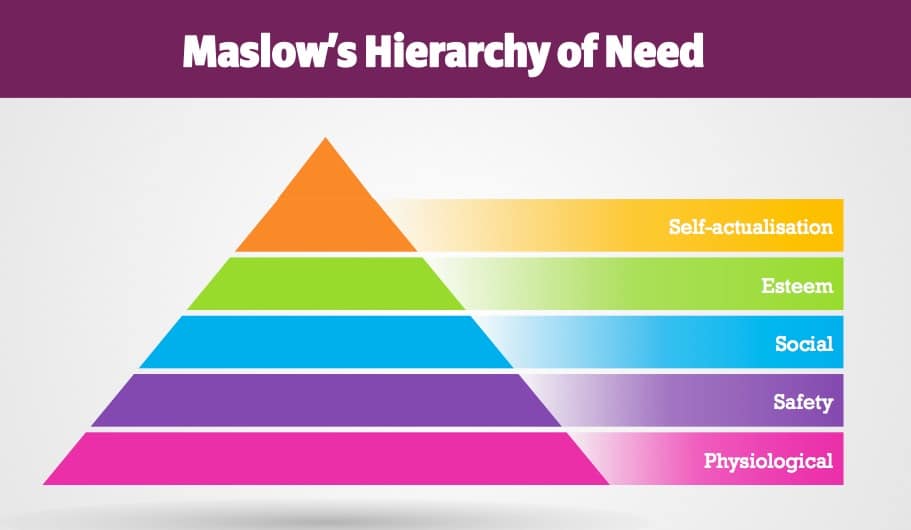With unexpected shifts in leadership, sudden layoffs, corporate restructures, and economic uncertainties, the workplace can quickly feel chaotic. Finding your balance amidst this turmoil can be challenging. How can you regain stability? And how do you create a perception of certainty with your team?
Managing Uncertainty
Dealing with workplace turbulence is a common aspect of professional life. Although it make evoke feelings of unease and apprehension, learning to embrace change is a healthier approach. After all, there is no real certainty of anything in life.
In times of turmoil and uncertainty, many individuals find themselves drained and overwhelmed by the challenges they face. Their future focus tends to be around worst case scenarios and prevention.
However, it is essential to dig deep and find the positive aspects of what is under transformation. By reframing our outlook on adversity and viewing it as a chance for growth, we equip ourselves to tackle change with resilience and effectiveness.
Let's take a look at seven ways you can teach yourself to to go from seeing challenges as energy drainers to energy gainers.
1. acknowledge Your Emotions
A lot of us have been told that we are victims of our emotions - that we cannot control how we feel.
The good news is that research shows that we are actually in control. We don't have to be at the whim of feeling fearful, angry or anxious. Recognising that we have the power to shape our mindset and perspective is truly empowering.
Emotions aren't positive or negative. They can provide you with helpful guidance, rather than indicating something is wrong.
At the Emotion Science Lab at Texas A&M University, they found emotions like anger and anxiety can be beneficial. Anger helps you take the actions that prepare you to overcome an obstacle, while anxiety helps you prepare for danger.
Allow yourself to feel into the emotions that bubble up during change. See them as guide posts to gently nudge you into the action you need to take (when you are ready).
Avoid the tendency to blame, go into self-pity or pretend you feel okay. Instead, stay open to the feelings and know that they are guiding you to the right actions. Realise that nothing is actually wrong, you have the choice to interpret a change in a new and different way.
2. Visualise a Bright Future
When we typically feel fearful, it's because we are focusing on the short term, rather than embracing a long term outlook.
One technique I use in my workshops is to get leaders to visualise how they want their teams to interact and work in the future.
It's about feeling what that will look like. The aim is for it to feel good and exciting. And to help leaders see what needs to be done now to get to the exciting new horizon that awaits them.
Your team all want to know that the hard work and effort will be worth it. The more you can help them understand how their contribution will make things easier for the team or customers, the more likely they will feel ease about the change. It's about feeling inspired because that will pave the actions that you need to take to get there.
Leaders are often going into change in defensive mode - preparing for something negative that hasn't happened yet. This puts them on the back foot. Instead, visualise regularly the positive future that awaits and invoke the relief and ease that your visualisation brings.
Life is supposed to be fun. Feel into how you can bring more happiness to your team, rather than worry about something that might not even happen.
3. Adopt Useful Beliefs
In the book, Useful Belief by Chris Helder, he talks about the need to consider what is more useful to us during a particular situation, rather than wallowing in self-pity and fear. It's about asking ourselves questions that help us focus on what's helpful in dealing with a situation we can't change.
Saying "Be positive" is not always be the most effective approach. We can't flip a switch and suddenly feel positive. What we need to do is a more gentler approach that helps us feel relief and find the hidden positives in what worries us. Instead of ruminating on the negatives, ask yourself:
- What is the most useful strategy to move me out of this moment and into a better place?
- What can I believe that will help me feel better about this situation?
- What strategy can I employ that would make this situation the best it can possibly be?
- What is the most useful belief I could have about this situation I'm walking into?
You have a choice in how you view the cards life gave you. It doesn't matter if your responses are 100% accurate. What matters is that you view the present in a manner that helps you capitalise on opportunities right now.
4. FOCUS ON SOLUTIONS, NOT DWELLING ON PROBLEMS
One of the things I say about
Achievement Zone leaders is that they are focused on finding solutions, rather than fixing problems.
They believe there is a solution for everything and they empower their people to use their knowledge, talents and potential.
It's about being calm and confident and not being unduly influenced by circumstances out of your control. It's about believing that no matter what challenges are thrown your way you have the power to learn, grow and create solutions with your team. No matter what happens, together you will work it out.
It means knowing the difference between linear and non-linear problems. In the book,
Toolkit for Turbulence by Graham Winter and Martin Bean, they identify that linear problems have a known or logical solution. While non-linear problems don't have a perfect solution and require tough decisions and trade-offs. This requires having an adaptive mindset that embraces new perspectives, rather than a defensive mindset that resists challenges and potential risks.
Most workplace problems are non-linear. They are tough and tricky to work with. Being focused on solutions rather than problems means being able to reorient yourself, and your team, to find the solutions and opportunities during the turmoil. It brings more ease, calm and flow to your team.
This can include asking curious questions that open up choices and possibilities:
- How can we look at this differently?
- Just for fun, what if we think of it this way?
- What's the opportunity here?
- How else could you look at this?
The more you get your team to stay in the energy of the solution, the more quickly they will find it. Most times, it will be when they are not even thinking about it.
5. Change your Language
Our words are more powerful than we think. They give us insight into how we feel. Make sure your words are empowering to both yourself and your people.
Leaders who are reactive and out of control with their emotions use language that can unintentionally create more fear and anxiety in their team, as well as create more distrust in leadership.
Negative language and reactions can hinder people's ability to discover solutions, potentially leading them into a downward spiral of fear and worry.
Amidst organisational change, it's natural not to align with every choice senior leadership makes.
When communicating with your team, refrain from scapegoating senior management. While it's important to acknowledge any disappointment you may feel, it's crucial to avoid displaying anger or resentment in the process.
This means avoiding phrases like:
- I can't believe they want us to do this.
- I don't trust the CFO. He's always cutting costs.
- It's their fault we're in this mess right now.
Instead, your job is to provide information as to how the decision was made. Collect all relevant data, ensuring to enquire further with management about the process behind reaching the decision.
- What criteria were used?
- What alternatives were considered?
- What broader factors were in play that are outside your visibility?
Employees want to know if leadership are making good decisions for the organisation on their behalf. They want to know whether they can trust their rationale. This can also lead to a deeper sense of trust of the company if it shows there are plans to proactively take the company where it needs to go and that no-one is being misled about what these changes require.
Not only that, sharing your thinking provides people with a blueprint on decision-making – a powerful training tool. This can be a helpful technique that stops the knee-jerk reaction of complaining about others.
6. Seek Valuable Support
Having a solid professional support system can be invaluable when navigating through periods of change.
This can include relationships with colleagues, so you can decompress and bond over shared experiences. However, falling into a cycle of gossip and finger-pointing is counter-productive. It will be much harder to pick yourself up and dust yourself off, if venting and complaining becomes part of your day.
There can also be negative consequences to your career with over-sharing. A better option is to confide in trusted personal networks outside of work that provide you with a different perspective. Rather than regurgitating the same negative stories with your colleagues in arms.
Research has found that joining communities of practice for leaders can be a significant shaper of professional identity where you have the opportunity to engage in dialogue, exchange feedback, and explore ideas with others. These interactions can positively influence your leadership education, helping you explore your beliefs with others who have many years of experience and expertise. A good example is the Tribe of Trusted Leaders Community which has been designed to support leaders to navigate change, uplift their teams and be inspired by others.
Having a mentor or coach can also be helpful to get external, impartial advice.
7. Look after Yourself
To help energise our team and help them feel able to cope with change requires looking after ourselves. This is foundational to having the energy to deal with change.
Your physical health matters. Getting enough sleep, exercise, water and nutrition matter. So does having the right amount of breaks that energise you.
After all, you can't give your team oxygen, if you haven't given it to yourself first. Make sure you take the time to reenergise your batteries. Take time out to feel inspired and rejuvenated by the amazing world we live in.
FLEXING your CHANGE Mindset
Turn the shock and upheaval into an advantage by adapting your mindset to one where you see challenges as opportunities for growth and learning.
By using these strategies to reframe you response to changing circumstances, you can cultivate resilience and navigate workplace uncertainties with confidence.



